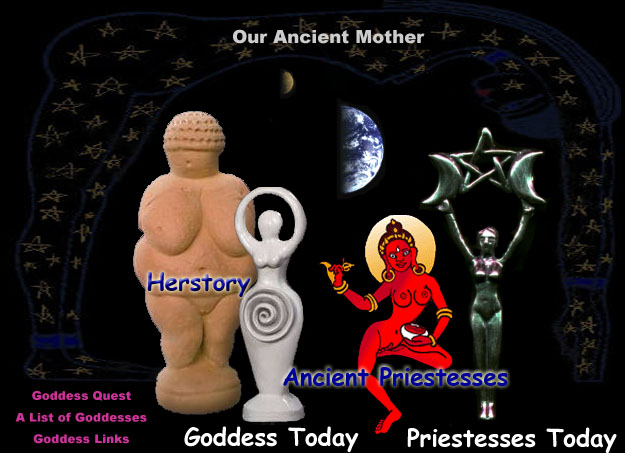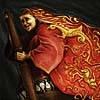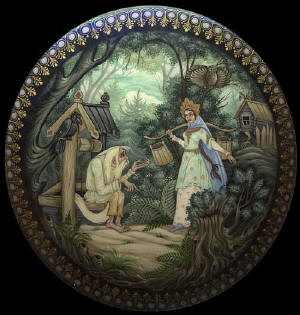"Old woman" of autumn of the Slavs. Later a prototype of our stereotypical witch.
The Old Women of autumn was called Baba by the Slavic inhabitants of eastern Europe, who believed she lived in the last sheaf of harvested grain; the woman who bound that sheaf would bear a child that year. Baba passed into Russian folk legend as the awesome, usually awful, Baba Yaga, a witch like woman rowing through the air in a mortar, using a pestle for her oar, sweeping the traces of her flight from the air with a broom. A prototype of today's fairy-tale witch, she was said to live deep in the forest and to scare passersby to death. She devoured her victims, which is why her picket fence was topped with skulls. Behind this fierce legend looms the figure of the ancient birth and death goddess, the one whose autumnal death in the cornfield led to a new birth the next spring.
- Russian folklore links
- Russian Art Gallery
- Here the old pagan Germanic, Slavic, Baltic and Icelandic Goddesses shall dwell again.
- Russian crafts
| "Yelena the Fair" is a quiet, humble, and kind young girl who lives in the forest near Baba Yaga. On her way to fetch water one day she came in contact with an old beggar. The old man asks her for some help, which she will eventually give him, but she also gives him a firm warning. If Baba Yaga happens to come across him sitting by the well she will help him for sure. However, she will not do so in good faith. She will want something in return and if he cannot come up with her payback she will turn him into a small forest animal. So the old man says, "Prove it," and she tells him to take a look around at all of the animals he sees. He does and she tells him that each used to be a person who was reckless enough to bargain with the old witch. She gets her water and leaves after giving fair warning, but the old man in desperation sits waiting for fate to turn its ugly head. - From Yelena the fair |
This page last updated: 03/01/2018


